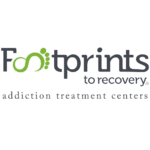Oxycodone is a prescription pain medication. OxyContin is a brand name for oxycodone. When it comes to OxyContin vs oxycodone, the primary difference is that OxyContin is a controlled-release oxycodone medication. Pain-relief properties are released over several hours instead of all at once, which is what oxycodone does. Both oxycodone and OxyContin have a high potential for abuse because of they produce euphoria effects when taken in large doses.
What Is Oxycodone?
A narcotic analgesic, oxycodone is a prescription medication that contains opioids. Brand names for oxycodone include:
- OxyContin
- Tylox (contains acetaminophen)
- Percodan (contains aspirin)
- Roxicet (contains acetaminophen)
- Percocet (contains acetaminophen)
Like other opioids, oxycodone comes from the poppy plant. It is a semi-synthetic opioid, which means it goes through chemical reactions in a laboratory to get to its form. It used to be prescribed generously to treat pain. Once it became clear that oxycodone was playing a role in the opioid epidemic, the medical community greatly decreased its prescribing of opioids like oxycodone. Physicians began looking to non-opioid medications to manage patients’ pain. Now, oxycodone is typically reserved to treat severe pain from:
- Surgeries
- Terminal illnesses like cancer
- Injuries
Oxycodone has a high potential for opioid abuse and addiction, which is why it’s classified as a Schedule ll drugby the Drug Enforcement Administration (DEA).
What Is OxyContin?
OxyContin is one of the brand namesfor oxycodone. This narcotic is an extended-release opioid analgesic, so it is prescribed for moderate to severe chronic pain that needs relief around the clock.
OxyContin is a pain medicine sometimes prescribed to chronic pain patients for:
- Cancer-related pain
- Injury pain
- Pain from arthritis, bursitis, or neuralgia
As an opioid prescription medicine and form of oxycodone, OxyContin abuse was also tied to the opioid epidemic. The medical community has taken efforts to curb its use. Like oxycodone, OxyContin is also classified as a Schedule II drug with high potential for abuse and addiction.
OxyContin vs Oxycodone: What’s the Difference?
The only significant difference between oxycodone vs OxyContin is the way it’s released in the body. Oxycodone is an ingredient in several prescription pain relievers. It is released in your body as soon as you take it. OxyContin comes in time-release tablets. This means its painkilling effects are released slowly, so you don’t need to take as many tablets. The pain relief is steady over several hours.
Similarities and differences between oxycodone and OxyContin include:
OxyContin vs Oxycodone: Their Source
Both oxycodone and OxyContin are opioid medications that come from the poppy plant. Thebaine is the substance from the plant that goes through chemical processes to create oxycodone and OxyContin.
OxyContin vs Oxycodone: Their Form
Oxycodone comes in liquid, capsule, and tablet forms. OxyContin comes in extended-release tablets of 10, 20, 40, and 80 mg, as well as 5 mg immediate-release pills. The tablets read “OC” on one side and note the number of milligrams on the other side. OxyContin pills come in pink, white, yellow, red, gray, brown, and green.
OxyContin vs Oxycodone: Their Uses
Oxycodone and OxyContin are both prescribed to treat severe pain. Oxycodone is quick acting, while OxyContin breaks down slower, spreading pain relief out over several hours. Doctors may prescribe OxyContin when pain needs continuous treatment, such as with cancer pain and other terminal diseases. Oxycodone is helpful for short-term pain like that from surgeries or injuries.
OxyContin vs Oxycodone: Their Pain-Relief Mechanisms
OxyContin and oxycodone are opioids that work on the brain in the same way. They bind to the brain’s opioid receptors. This helps block pain signals and releases dopamine, which can relax people and is also what causes the euphoric effects when opioids are abused.
OxyContin vs Oxycodone: Their Side Effects
Because Oxycodone and OxyContin are the same substance, their side effectsoverlap and may include:
- Sleepiness
- Fatigue
- Headache
- Constipation
- Abdominal cramps
- Vomiting
- Nausea
Severe side effectsof oxycodone and OxyContin include:
- Shortness of breath
- Trouble breathing
- Chest pain
- Face swelling
- Tongue or throat swelling
- Rapid heart rate
- Light-headedness or feeling faint
- Extreme drowsiness
OxyContin vs Oxycodone: Abuse
People who abuse opioidsdon’t usually discriminate between oxycodone and OxyContin. They are both opioids that people abuse for the potential feelings of:
- Euphoria
- Relaxation
- Less inhibitions
- Heightened mood
- Less stress
Because of its extended-release form, people who take OxyContin to get high may crush it, chew it, snort it, or inject it. This allows them to bypass some of the time-release properties.
The efficacy and safety of opioids is proven when monitored closely by a doctor and taken as prescribed. Opioid addiction sometimes starts with doctors prescribing the drugs for treating moderate to severe chronic pain. People who are predisposed to addiction may like the way opioids relieve their stress or mask mental health symptoms or trauma. They may start taking oxycodone more times daily than prescribed or seeing different doctors to get more opioids. Prescription painkiller addiction has led some people to abuse heroinbecause it is usually easier and cheaper to obtain.
Addiction Treatment for OxyContin or Oxycodone Abuse
OxyContin and oxycodone addiction are treated the same way. If you abuse opioids, your recovery journey usually begins with medical detox. Following detox, you will attend a structured treatment program to address the reasons why you abuse substances and learn healthy coping skills. Opioid addiction treatmentmay include:
Medical Detox
Opioid withdrawal symptomscan be painful, and even dangerous in some cases. You should always detox from opioids with the help of medical professionals. During medical detox, you’ll receive round-the-clock care from medical professionals who will monitor your vital signs and comfort. They will administer withdrawal medications as clinically appropriate to ease pain.
Addiction Treatment
Once you’ve safely eliminated opioids from your system, you’ll begin intense behavioral therapy and recovery activities to help you address the reasons behind substance abuse. You’ll also learn healthier coping skills. Many people benefit from inpatient treatmentbecause it provides space away from triggers. Triggers can feel especially overwhelming in early recovery, and residential (inpatient) treatment allows you to focus on yourself without distractions and triggers.
Addiction treatment programs typically include:
- Medical detox
- Residential treatment
- Partial hospitalization program
- Intensive outpatient program
- Outpatient program
- Sober living residences
This continuum of care allows you to transition from intense levels of treatment to outpatient programs with fewer hours and less structure. This allows you to gain a strong foundation in recovery and ease back into everyday life, relationships, and responsibilities that can be sources of stress and relapse risks.
Approaches used in opioid addiction treatment often include:
- Individual therapy
- Group therapy
- Family therapy
- Dual-diagnosis treatment for co-occurring mental health disorders
- Cognitive behavioral therapy
- Trauma therapies like EMDR(eye movement desensitization and reprocessing)
- Treatment of chronic pain through chiropractic services and massage therapy
- Holistic approaches like yoga, art therapy, and music therapy
- Medication assisted treatment (MAT)as clinically appropriate
Aftercare
Opioid recovery work doesn’t end when you leave addiction treatment. Staying sober is something that requires time and dedication. Your treatment team will help you set up appointments and educate you on resources and activities that support long-term recovery from opioids like OxyContin and oxycodone. These may include:
- Individual counseling
- Psychiatry appointments
- Physician appointments
- Peer-led support groups like the 12 Steps
- Alumni groups and activities
- Pain management services
- Sober living residences
Looking for Help?
When it comes to OxyContin vs oxycodone, both can bring damage and pain to your life. Footprints to Recovery provides evidence-based substance abuse and mental health treatment. Our treatment teams are made up of highly experienced, compassionate professionals that truly care about you and your recovery. If you or a loved one is struggling, call us today for a free, confidential consultation.
References



